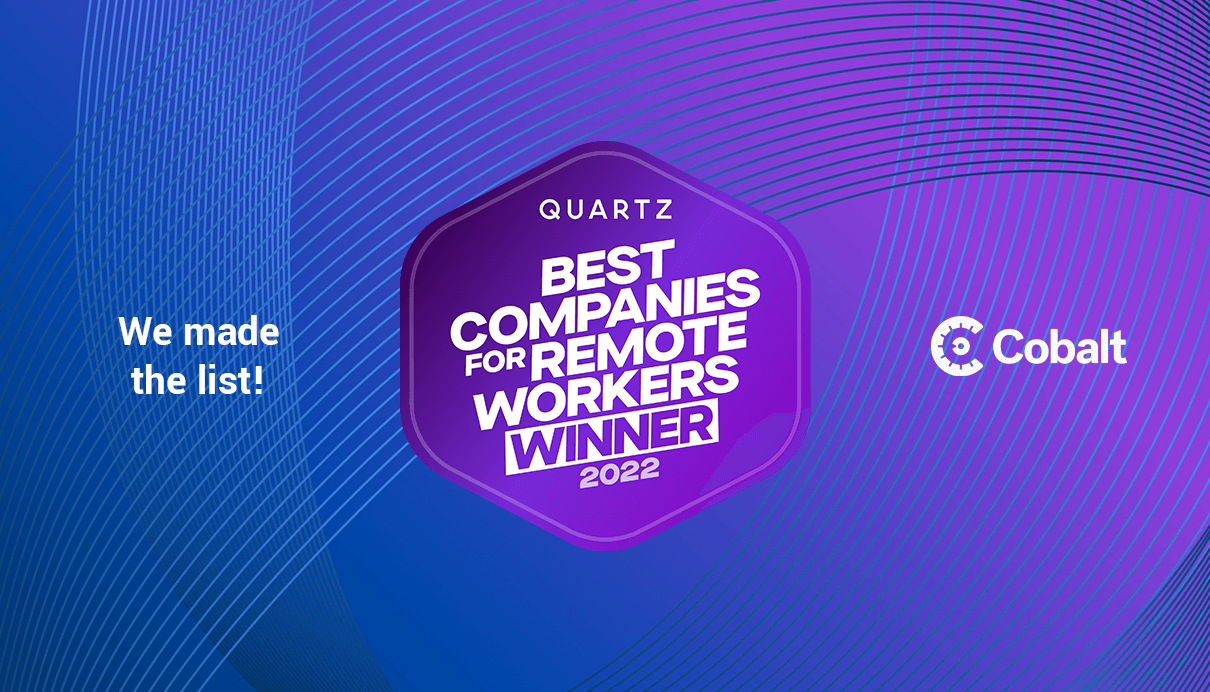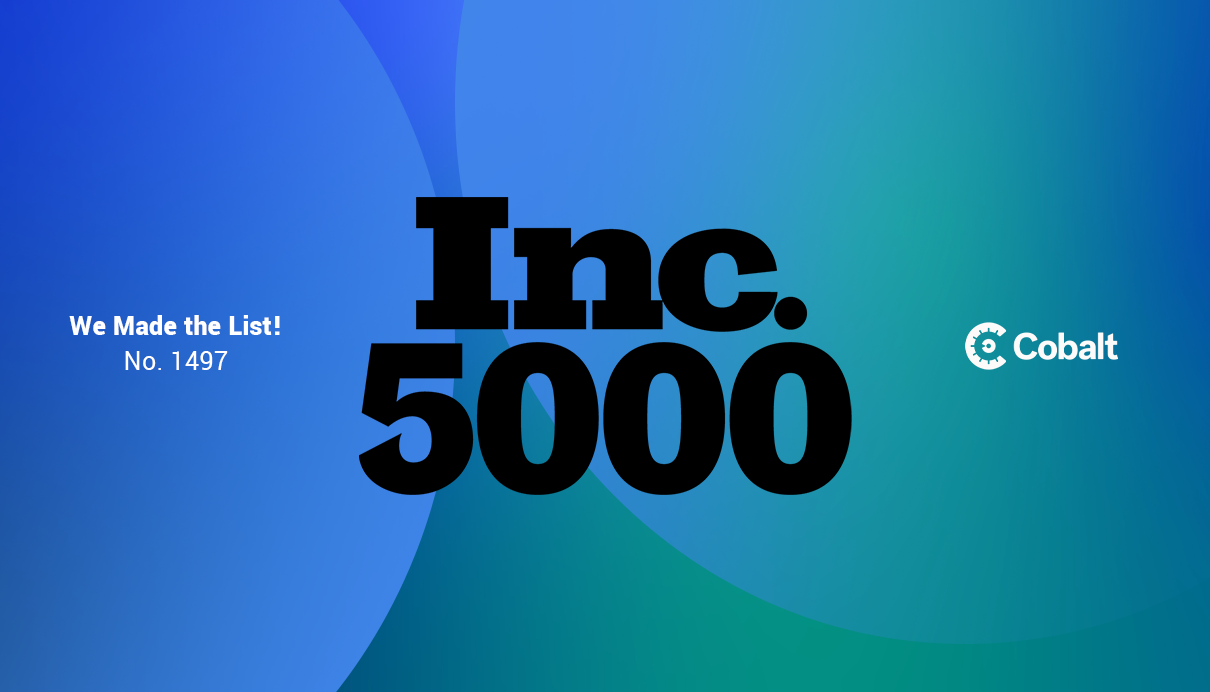We are excited to announce that today Quartz unveiled its inaugural list of the best companies for remote workers, and Cobalt ranked number 6 out of 24 on the medium-sized companies list!
What makes a company a best place to work? It all depends on personal preferences, but at a high level, most people would agree it’s a place that treats you well, pays you fairly, and helps you to reach your professional potential in a comfortable atmosphere.
These same desires apply to a remote job—but there are also other major considerations that ultimately determine your happiness. Do you have the right equipment, relationships, and communication you need to work effectively? Do you feel included in your company culture? Are you trusted by managers who can’t always see you? Will you have just as many pathways for growth or advancement as your office-going peers? What happens if you’re just starting out in your career?
With that in mind, Quartz invited companies to apply for recognition in the first global ranking of the best companies for remote workers. They worked with independent research firm Best Companies Group to conduct a two-part survey of each applicant, one involving the employer and the other its employees.
The surveys assessed company practices and measured employee satisfaction in areas including leadership, pay and benefits, training and development, corporate culture, communication, and overall engagement. The survey scores determined the rankings, which comprises three lists separated by employer size: small, medium, and large.
As Heather Landy, Quartz executive editor, puts it: “the future of remote work hinges on how adaptive and innovative companies are willing to be. That’s why Quartz’s first-ever global list of the best companies for remote workers is so important. It showcases who is leading the way—across every time zone. These are companies that are making it easy for employees to work from anywhere, encouraging them to get away from work when they need to, and offering great perks and practices for remote workers so they can do it all.”
At Cobalt, we couldn’t agree more! Check out the full list here.
Methodology & Eligibility
To be eligible, organizations were required to have at least 25 full-time permanent employees who qualify as remote workers, along with being at employers with 100+ permanent full-time employees and at least 25% of the workforce remote. Temporary or seasonal employees, per diem, independent contractors (1099), interns, and consultants were not counted as full- or part-time permanent employees, and they were not included in the evaluation process.
A remote worker was defined as someone who performs at least 75% of their job in a location that is neither affiliated with nor fully furnished by their employer.
Eligible companies agreed to submit an employer questionnaire about their policies and practices, worth about 25% of each company’s overall score. They also agreed to let our independent research partner, the Best Companies Group, survey their remote staff, with employee sentiment counting for about 75% of the total score.
About Quartz Media
Quartz is a digitally native news organization with a mission to make business better. 50 journalists around the world specialize in analysis of the global economy for an audience of purpose-driven professionals. They help readers discover new industries, markets, and ways of doing business that are more sustainable, innovative, and inclusive. Quartz is the top business publication for global executives ages 25-45, and has been a pioneer in premium, mobile-first, native advertising experiences since its founding in 2012.
Update: See Cobalt's position in the 2022 Quartz List of Best Companies for Remote Workers.









